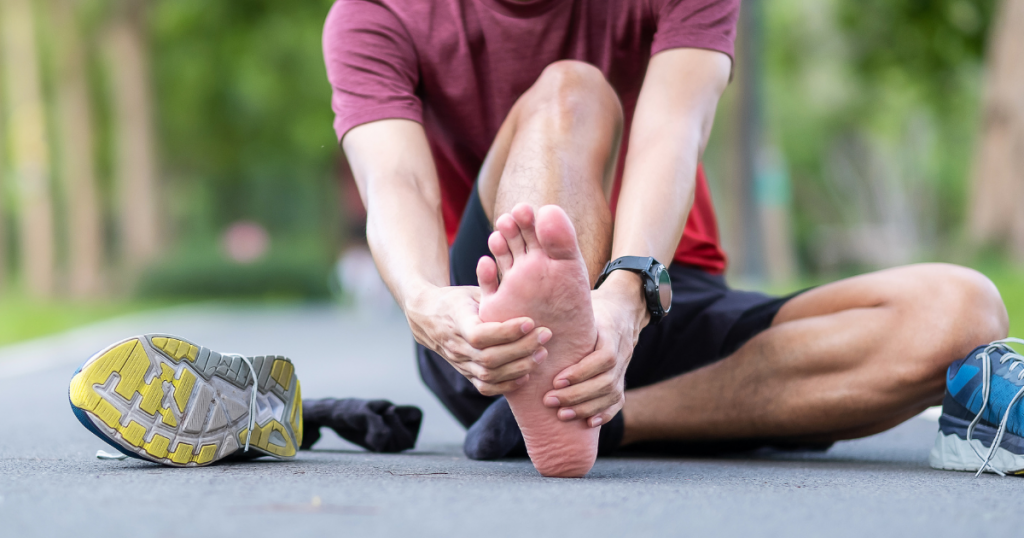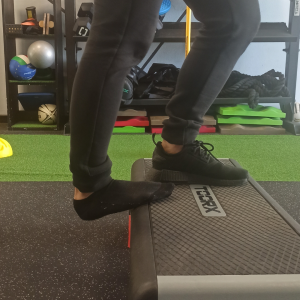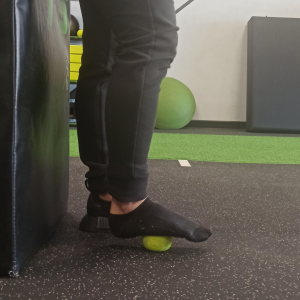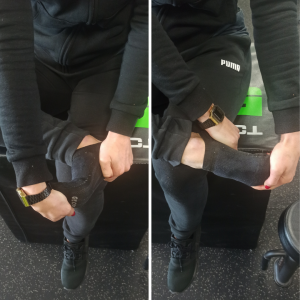Plantar Fasciitis: symptoms, remedies and useful exercises

Plantar fasciitis is an inflammation of the fascia covering the muscles on the sole of the foot. The first symptom of this inflammation is pain, particularly in the posterior insertion area, around the calcaneus, and in the centre of the sole of the foot, with consequent difficulty in walking and general functional weakness of the foot.
Localising the pain is very important in order to distinguish plantar fasciitis from other inflammations due to overload that may affect the foot, such as metatarsalgia.
Plantar fascia: anatomical notes and functions
The plantar fascia consists of fibrous connective tissue arranged longitudinally, originating from the periosteum of the medial calcaneal tubercle, where it is thinner. The thicker, central portion of the plantar fascia runs along in five bands, surrounding the flexor tendons, and crosses all five metatarsal heads. The plantar fascia joins all the main structures in the foot, starting from the Achilles tendon, the intrinsic muscles, the skin and subcutaneous tissue.
This fascia of fibrous connective tissue is essential for foot functions: it is responsible for absorbing up to 110% of body weight while walking and 250% of body weight while running. It is important to note how it deforms more when walking with bare feet than with shoes, and this is why it is fundamental to always choose footwear with appropriate plantar support if you suffer from plantar fascia problems.
Causes and symptoms of plantar fasciitis
In most cases, plantar fasciitis falls within the category of injury due to overload. It is in fact mainly due to a repetitive stress leading to micro-lacerations of the plantar fascia, but may also occur following trauma or other causes.
The risk factors contributing to plantar fasciitis include:
- Loss of dorsal flexion in the ankle;
- Deformity of the foot, such as claw foot or flat feet;
- Excessive dynamic pronation of the foot;
- Repetitive activity due to impact or continuous load, such as standing for a long time, running etc.;
- Badly fitting shoes;
- Being overweight;
- Diabetes mellitus and/or other metabolic conditions;
- Discrepancy in leg length;
- Tension and/or weakness in the Gastrocnemius, Soleus, Achilles tendon and the intrinsic muscles of the foot.
The doctor will diagnose Plantar Fasciitis on the basis of case history and a physical examination. The most frequent signs and symptoms of plantar fasciitis are::
- Heel pain when you first walk in the morning or after long periods of rest;
- Heal pain, particularly in the antero-medial region;
- Limited dorsal-flexion and shortened Achilles tendon;
- The patient may limp or have difficulty walking on tip-toes;
- The pain is usually worse with bare feet on hard surfaces or when climbing the stairs;
- The pain can also be noted with the passive dorsal flexion of the ankle and toes (particularly the big toe).
In many cases, these symptoms appear following a sudden increase in sporting and/or working activities. In some cases, the physician may decide to use instrumental diagnostics, such as an x-ray, ultrasound scan or magnetic resonance, to exclude any correlated pathologies.
How to cure plantar fasciitis: physiotherapy, remedies and useful exercises
In most cases, curing plantar fasciitis consists of conservative treatment, performed by the Physiotherapist. The use of anti-inflammatory drugs may help to soothe the pain in the first few days, but cannot be considered a definitive solution.
The most commonly used and effective remedies for solving the problem and get back to walking are:
- Abstaining from activities that cause pain (as far as possible);
- Manual therapy on the plantar fascia and calf;
- Mobilisation and joint manipulations on the foot and ankle;
- A shock wave cycle;
- Stretching and/or reinforcing exercises for the plantar fascia, Achilles tendon and calf muscles;
- Use if required of a specific orthotic insole, made to measure by a Podiatrist.
If these treatments are not effective, Plantar Fasciitis can be cured using infiltration treatments performed by an Orthopaedic doctor, or, in the case of chronic pain, surgery.
Exercises for Plantar Fasciitis to be performed autonomously at home
The most useful exercises include stretching and reinforcing the plantar fascia, Achilles tendon and calf muscles (gastrocnemius and soleus). Attention should be paid to specific reinforcing exercises for plantar fasciitis, as these should be done initially under the supervision of the Physiotherapist, as during the initial phases they may exacerbate the pain.
Here below are a few examples of plantar fascia exercises that can be done autonomously at home:
 |
Stretching of the calf and Achilles tendon Standing on a step, lower the heel of the foot suffering from fasciitis while keeping the knee straight. Hold for 40-60 seconds and repeat 2-3 times. The same exercise can also be done with the knee bent, to concentrate the work on the Soleus muscle. |
 |
Self-massage of the plantar fascia with a tennis ball Standing with the hands resting on a wall, place a tennis ball under the centre of the foot. Exert slight pressure downwards and massage the plantar fascia, from the heel to the toes, for 60 seconds. Repeat 3 times. |
 |
Stretching the plantar fascia Sitting, cross the painful foot over the opposite leg. Grasp the lower part of the toes with your hand and stretch them in the dorsal direction until you feel the tension in the plantar fascia. Hold the position for 60-90 seconds and repeat several times during the day. |




